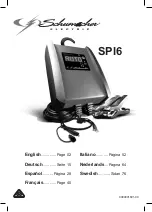
•
Two or more under inflated tires.
•
Sudden loss of tire pressure.
•
Vehicle speeds less than 20 mph (30 km/h), greater than 70 mph (120
km/h) or driving duration less than 10 miles.
•
Transporting a heavy load or towing a trailer.
•
A different tire was replaced and was not the same brand, type, size,
speed rating, load carrying capacity and DOT code as the other tire on
the same axle.
•
System was not reset after tire rotation, air pressure adjustment, a tire
change, wheel alignment or tire balancing.
•
System was not reset after the ABS warning lamp illuminates.
The low tire warning feature can be turned off by your dealer.
TIRES
Tires are designed to give many thousands of miles of service, but they
must be maintained in order to get the maximum benefit from them.
Glossary of tire terminology
•
Tire label:
A label showing the OE (Original Equipment) tire sizes,
recommended inflation pressure and the maximum weight the vehicle
can carry.
•
Tire Identification Number (TIN):
A number on the sidewall of
each tire providing information about the tire brand and
manufacturing plant, tire size and date of manufacturer.
•
Inflation pressure:
A measure of the amount of air in a tire.
•
Standard load:
A class of P-metric or Metric tires designed to carry a
maximum load at 35 psi [37 psi (2.5 bar) for Metric tires]. Increasing
the inflation pressure beyond this pressure will not increase the tires
load carrying capability.
•
Extra load:
A class of P-metric or Metric tires designed to carry a
heavier maximum load at 41 psi [43 psi (2.9 bar) for Metric tires].
Increasing the inflation pressure beyond this pressure will not increase
the tires load carrying capability.
•
kPa:
Kilopascal, a metric unit of air pressure.
•
PSI:
Pounds per square inch, a standard unit of air pressure.
•
B-pillar:
The structural member at the side of the vehicle behind the
front door.
2004 Monterey
(mty)
Owners Guide (post-2002-fmt)
USA English
(fus)
Maintenance and Specifications
251
















































